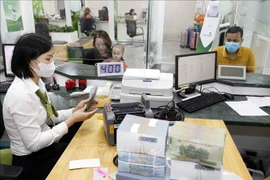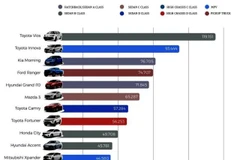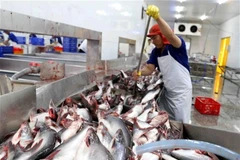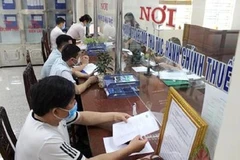In the last month, major banks including Vietcombank, ACB, TPBank,SHB, BIDV and consumer finance companies have been rolling out offers withincentives to individual customers.
Industry insiders said there was substantial demand for loans fromthe public, surpassing the previous year. However, they said it could also beattributed to a decline in income and an increase in unemployment. Despite thehigh demand, consumer finance companies are exercising caution in disbursingloans, particularly as debt defaults show no signs of improvement.
Since the end of the previous year, the State Bank of Vietnam(SBV) has issued directives urging credit institutions and bank branches toprovide additional credit for individual consumption. The SBV emphasised theimmediate implementation of solutions utilising data from the nationalpopulation database to ensure safe and effective lending operations and enhancepeople's access to bank credit.
Nguyen Quoc Hung, Secretary-General of the Vietnam BankingAssociation (VBA), said it has been a welcome change as consumer credit growthwas at its lowest level in the past five years due to economic difficulties,declining incomes and increasing bad debts.
Experts and insiders, however, said a gradual recovery in domesticdemand, leading to a resurgence in consumer credit is anticipated in 2024.
Economist Nguyen Huu Huan, head of the Finance Market Department at the Ho Chi MinhCity University of Economics, said solutions to the surplus liquidity in bankshinge on robust growth in three driving forces: domestic consumption, exports,and public investment.
While domestic consumer demand remains relatively weak, Huansuggested that reducing taxes and fees could contribute to boostingconsumption. However, to stimulate consumer credit, the Government must adoptstronger policies, especially in the real estate sector, and measures to makehousing more affordable.
Last year, private investment only saw a modest increase of 2.7%,the lowest in the past decade, which had been typically growing by 12-14%annually. Meanwhile, consumer demand saw a mere uptick of 3.52%, with economicgrowth largely driven by Government spending.
Looking ahead to 2024, Hoang Huy, an analyst at Maybank InvestmentBank in Vietnam, said he anticipated a resurgence in domestic consumption asthe primary driver of growth. This optimism will likely be fuelled by therevival of exports, more stable financial conditions for households, and agradual recovery in the real estate market.
Experts said that consumer loans from banks, particularly thosefor home purchase and renovation, will outperform those of consumer financecompanies, primarily due to the recent positive changes in the real estatemarket. Consumer finance companies were expected to face challenges as theirprimary customer base, those falling below the national income level, continuedto grapple with financial difficulties.
"Consumer credit this year will face continued difficultiesbecause borrowers are reducing demand, while lenders are more cautious due toincreasing bad debt. Bad debts of consumer finance companies are risingrapidly, forcing them to be cautious in lending," said Professor Dr DinhTrong Thinh.
Another impediment to the growth of consumer credit has been Vietnam'slack of a robust legal framework to handle violations related to lendingactivities. Addressing this issue will be crucial for instilling confidence inbanks and financial companies to lend more freely.
According to a recent survey of banks and financial institutions,handling bad debt in consumer lending is challenging due to the absence ofcollateral. Moreover, banks and financial institutions lacked the necessarymanpower to handle thousands of small individual bad debts. To make matters worse,the traditional method of selling these debts in batches was no longer viable.
For instance, at BIDV, non-collateral bad debts for consumer loansaccount for less than 1% of the total consumer loan balance. However, the sheervolume of loans, numbering in the thousands, complicated the recovery processdue to a manpower shortage.
In practice, selling a portfolio of bad debts was deemedinfeasible due to the absence of buyers in the market, given the small scaleand lack of collateral of these loans. Additionally, credit institutions wereprohibited by investment law from hiring debt recovery services. While debtrecovery faces many challenges, legal proceedings and lawsuits are oftenprolonged and costly./.





























